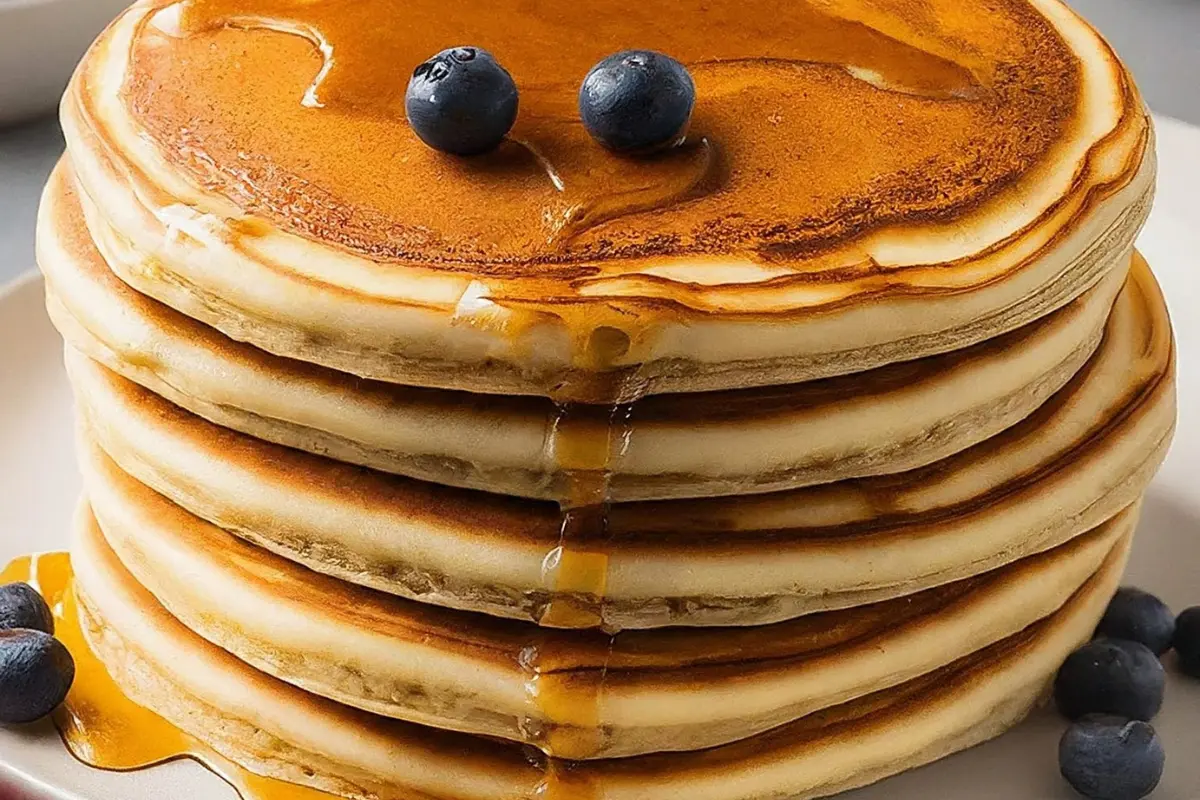What is the Secret to Making the Best Pancakes?
Pancakes are a beloved breakfast staple, but achieving the perfect stack can be tricky. Whether you’re a weekend warrior or a seasoned cook, there’s always room to refine your pancake-making skills. In this guide, we’ll delve into the secrets that will help you master the art of making the best pancakes every time.
Selecting the Right Ingredients
The foundation of a great pancake lies in the quality and type of ingredients used.
- Flour: The type of flour you choose significantly impacts your pancakes. All-purpose flour is the most common, but whole wheat or gluten-free flour can add different textures and flavors. You can also explore what are the ingredients for pancakes here.
- Leavening Agents: Understanding the difference between baking powder and baking soda is crucial. Baking powder adds lift, making your pancakes light and fluffy, while baking soda needs an acidic ingredient (like buttermilk) to activate.
- Sweeteners: While sugar is the go-to, experimenting with honey or maple syrup can add a unique depth of flavor.
- Liquids: Milk is standard, but buttermilk can create a richer, tangier pancake. Non-dairy options like almond or soy milk work well too.
- Fats: Butter is traditional, providing a rich flavor, but oils like coconut or vegetable oil can also be used depending on the desired outcome.
For a deeper dive into how these ingredients can be optimized, check out King Arthur Baking’s expert tips on making the best pancakes.
The Secret to Fluffy Pancakes
Achieving the perfect fluffy pancake is all about technique and patience.
- Buttermilk: Using buttermilk is a game-changer. Its acidity reacts with baking soda to create a lighter, airier pancake. This reaction not only makes the pancakes fluffier but also adds a delightful tang. If you are curious about perfecting your pancake recipe, check out the ultimate pancake recipe here.
- Egg Whites: Separating the egg whites from the yolks and whipping them before folding them into the batter can add extra volume.
- Resting the Batter: Allowing your batter to rest for 10-15 minutes lets the gluten relax and the air bubbles to develop, which leads to a more tender pancake.
Discover more about the science behind these methods at The Chopping Block.
Mixing the Batter Properly
The way you mix your batter is as important as the ingredients themselves.
- Wet Ingredients First, Then Dry: Always mix your wet ingredients first before gently folding in the dry ones. This helps to prevent overmixing.
- Avoid Overmixing: It’s tempting to stir until smooth, but overmixing will develop too much gluten, leading to dense, tough pancakes. It’s okay to have some lumps in the batter.
The Ideal Cooking Environment
Even with the perfect batter, the way you cook your pancakes can make or break the outcome.
- Choosing the Right Pan: A cast iron skillet holds heat well and ensures even cooking, but a non-stick pan can be more forgiving for beginners.
- The Perfect Heat: Pancakes need a medium-low heat to cook through without burning. Too hot, and they’ll burn on the outside before cooking inside; too cool, and they’ll turn out flat.
- Preheating the Pan: Always preheat your pan before adding the batter. This ensures even cooking from the start.
Cooking Techniques for Perfect Pancakes
Execution is everything when it comes to making pancakes.
- Timing the Flip: Flip your pancakes when bubbles start to form on the surface, and the edges look set. Don’t be tempted to flip too early!
- Flipping Technique: Use a quick, confident motion to flip your pancakes. Hesitation can lead to uneven cooking or a messy flip.
- Avoid Overcrowding: Cook one or two pancakes at a time to maintain control over the cooking process and ensure even heat distribution.
Common Pancake Problems and How to Fix Them
Even experienced cooks encounter problems when making pancakes. Here are solutions to some common issues:
- Flat Pancakes: This could be due to old leavening agents or overmixing. Ensure your baking powder is fresh, and don’t overwork the batter.
- Burnt Pancakes: If your pancakes burn before they’re fully cooked, your heat is too high. Lower the heat and cook more slowly.
- Undercooked Pancakes: If the pancakes are raw in the middle, try lowering the heat or cooking them longer at a lower temperature.
Pancake Toppings and Variations
The right topping can elevate your pancakes from good to great.
- Classic Toppings: Syrup, butter, and fresh fruits like berries or bananas are always a hit.
- Creative Toppings: Nut butters, flavored syrups, whipped cream, or even savory options like bacon and eggs can add a unique twist.
- International Variations: Explore global pancake styles such as French crepes, Russian blinis, or Dutch pannenkoeken for a different take on this classic dish.
Frequently Asked Questions (FAQs)
Why are my pancakes not fluffy?
This is usually due to overmixing or not letting the batter rest. Make sure your leavening agents are fresh and that you’re using the right amount.
How do I make pancakes without eggs?
You can substitute eggs with mashed bananas, applesauce, or flaxseed meal mixed with water.
What can I use as a substitute for buttermilk?
Mix 1 tablespoon of lemon juice or vinegar with a cup of milk and let it sit for a few minutes to create a buttermilk substitute.
Can I make pancakes ahead of time?
Yes, you can make pancakes ahead of time and reheat them in the oven or toaster. Alternatively, freeze them for up to two months.

